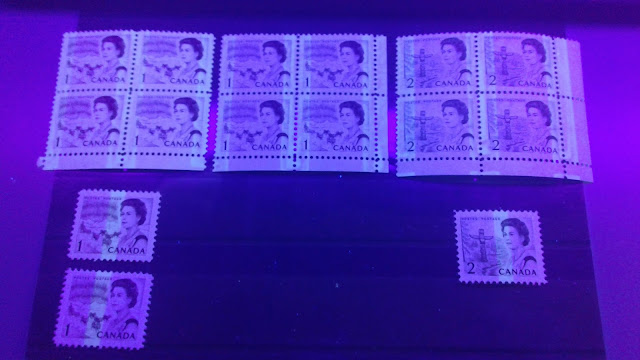Ottawa Tagging on The 1967-1973 Centennial Issue

Today's post is the second post that will deal with the tagging used on the 1967-1973 Centennial Issue. Last week, I looked at the Winnipeg Tagging, which began to be replaced in late 1971 and was fully superseded in 1972, by what is known to collectors as General Tagging, or Ottawa Tagging. This is now the standard tagging that is found on nearly all Canadian stamps since that time. However, the process of replacing the Winnipeg tagging with the new Ottawa tagging, was not without its experimentation as well, and it is this experimentation that has led to the existence of additional collectible varieties that go beyond the mere Ottawa Tagging itself. The points of interest, where varieties occur, that will be discussed in today's post are: Variation in the chemical composition of the taggant compound: OP-2 versus OP-4 tagging. Variation in the colour of the tagging under UV light. Intensity of tagging bars in normal light. The width of the tagging bars. Tagging erro...

